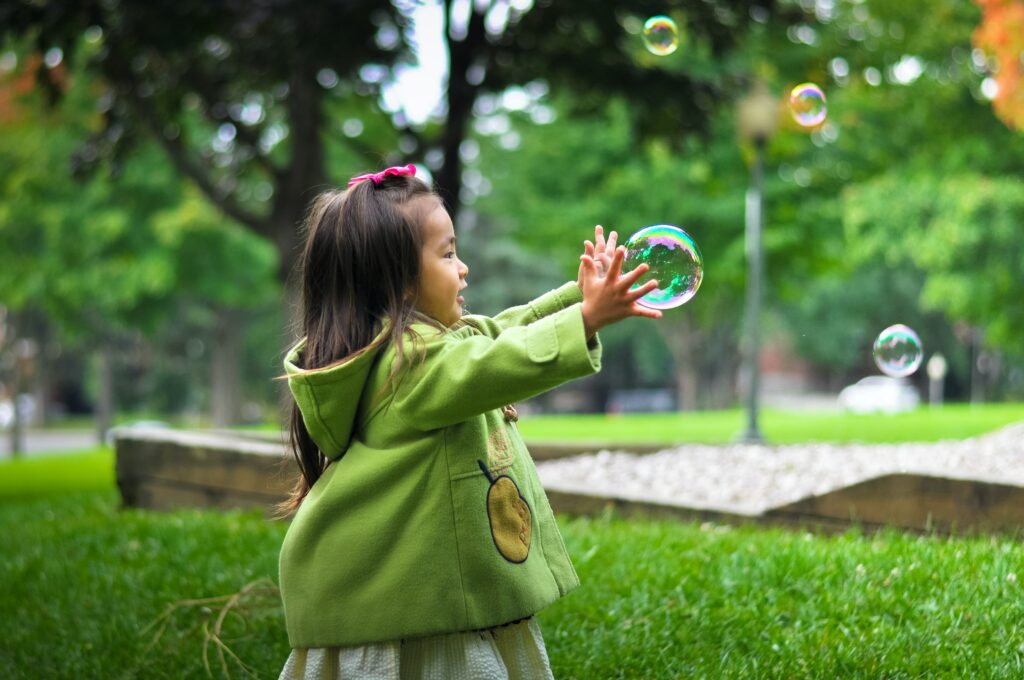Have you walked down the toy aisle of a store lately? Well, I should correct that, the MANY toy aisles of stores. The variety of toys is endless. The things the toys can do are shocking…there are life-size toy dogs that will walk and talk, robots that can be programmed and speak to children, and countless different versions of technology. It can be tempting to fill a child’s toy shelves with all these different items or contrarily, save money and space by simply adding some apps to their electronic devices.
Instead, opting for these five “B” toys can provide endless benefits in terms of space, cost, and, most importantly, child development.
Blocks
Blocks can come in many forms. With traditional wooden blocks, children can count, stack, and sort. Blocks that come with a shape sorter (a container with a lid with various shape cut-outs like a star, circle, square, triangle, and heart) can teach children names of shapes, matching, and fine motor skills to manipulate the shapes to fit through the openings. Completing shape sorters and puzzles on a tablet do not provide the same benefit level. Finally, if you would like to create inexpensive blocks at home, keep items such as tissue boxes, juice box cartons, and cereal boxes and wrap them in duct tape. Children can stack and make life-size towers with these homemade blocks.
*Take note if your child struggles with any of these skills after the age of 3: Stacking 3+ blocks vertically, putting the shape blocks in the shape sorter.
Balls
*Take note if your child struggles with basic back and forth rolling and throwing skills.
Young children are naturally drawn to playing with balls. The interaction aspect of ball play is extremely beneficial, even for a very young child. A great way to implement this engagement is to have one adult or older child sitting on the ground and have your child sit in the lap of another adult or older child. The child with the adult can either independently, or with help, roll the ball to the other participant. The ball can be rolled after the adult says, “1, 2, 3, Go!” Or the practice could be on “my turn- your turn,” and the adults can state “my turn” and then have the ball roll to them or “your turn” and roll the ball to the child. As the child gets older basic throwing, catching, and kicking can be added to the repertoire of ball play.
Books
It is common knowledge that literacy is important for children. All children, regardless of age, should have adults read to them daily. When reading the books to a child, show awareness of the child’s attention level. When reading to them, talk to the child about the pictures. Ask your child to point to pictures (for example, “point to the picture of the dog”) or ask comprehension questions (“What did the little boy eat for dinner?”).
*Take note if your child struggles to sit still for at least five minutes to listen to a story or if they are unable to point to requested pictures in the book (ages 2-3) or answer basic questions.
Ex. “What did the boy eat?” when there is a picture of a pizza on the page (ages 3-4).
Babies
*Take note if your child is unable to identify 3+ body parts (ages 2.5+)
Both young boys and young girls often carry around stuffed animals or baby dolls. These dolls can bring emotional comfort to children. It is helpful to use these items for pretend play. For example, the babies can pretend to do the child’s daily steps (dressing, eating, napping) to help them practice what they will one day complete independently. Young children can practice handling emotions with the baby dolls, such as hugging or rocking the baby doll when it is “sad.” Additionally, use the baby to start identifying body parts (where are the baby’s eyes, feet, etc.).
Building babies’ brains brings benefits. It’s clear. It’s not money or access to fancy toys or technology. Give your child access to the basics, but know your focus. If you expose your child to purposeful materials with adult interaction, immense knowledge of your child’s developmental level will become clear.
If there are ever concerns with your child’s development, there are helpful tools to consider. Developmental Milestones are found on the site: https://buildingbabiesbrains.com/
Consult your pediatrician to determine if any medical concerns should be concerned.
Call Gwinnett County Public Schools Early Childhood Special Education Referral Line 678-301-7244 to determine if your child should be evaluated to determine developmental delays in cognition, personal/social skills, adaptive skills, communication skills, fine or gross motor skills, or play.


